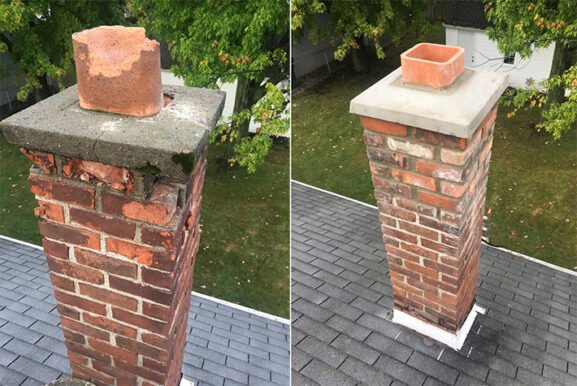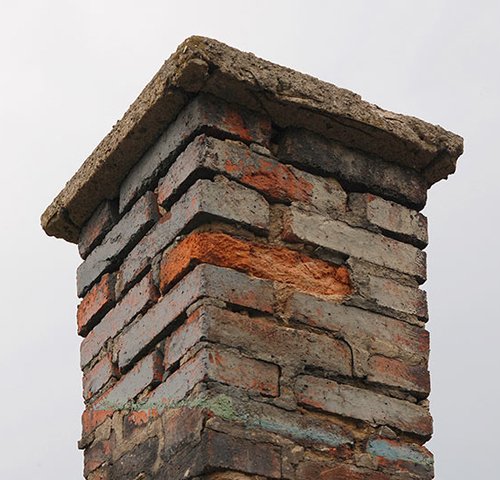Understanding Leaking Chimney Repair Cost and What Affects It Most
Key Takeaways
- The cost to repair a leaking chimney depends on the root cause, materials, and accessibility of the structure.
- Delaying repairs can lead to costly structural damage and indoor issues like mold and water stains.
- Repairs can range from minor sealing jobs to full chimney rebuilds, each with a different price tag.
- Routine inspections and waterproofing can prevent expensive chimney leaks in the future.
What Causes a Chimney to Leak in the First Place
A leaking chimney might not always be obvious. You might see water stains on your ceiling, notice a musty odor near your fireplace, or even see visible water inside the firebox. But the cause could come from several parts of the chimney structure. Cracked crowns, damaged flashing, deteriorated mortar joints, or missing chimney caps are often to blame.
In colder climates, moisture gets worse when freeze-thaw cycles cause bricks to expand and contract, eventually leading to cracks. Without proper sealing or maintenance, this damage worsens. It’s important to understand what’s behind the leak before you can get a clear cost estimate for repairs.
How Much You Can Expect to Spend on Chimney Leak Repairs
The cost of repairing a leaking chimney can vary greatly depending on the extent of the damage and the type of materials involved. On average, here’s what you might expect:
- Minor sealant or crown repairs: $150 to $400
- Flashing repair or replacement: $300 to $700
- Tuckpointing or mortar joint repair: $500 to $1,200
- Chimney cap installation or replacement: $150 to $300
- Partial chimney rebuilds: $1,500 to $4,000
- Full chimney rebuilds: $4,000 to $10,000+
If water damage has spread to nearby walls or roofing, that cost could increase even more. The more you delay, the higher your expenses may grow due to added water infiltration or structural rot.
Factors That Influence the Cost of Chimney Leak Repairs
Repairing a leaking chimney isn’t a one-size-fits-all job. Several factors impact what you’ll pay:
Type and Severity of Damage
If it’s just the chimney crown that’s cracked, a sealant or resurfacing job might be enough. But if water has eroded mortar joints or damaged bricks, more extensive work like tuckpointing or brick replacement is needed. Severe leaks may even call for structural rebuilds.
Height and Accessibility
The taller the chimney, the more complex and dangerous the job becomes. Roof pitch, material type, and how easy it is for contractors to reach the chimney all influence labor costs. Chimneys on multi-story homes or steeply pitched roofs will cost more to repair than those on single-story structures.
Geographic Location
Labor and material costs vary by region. In high-cost-of-living areas like New York or northern New Jersey, chimney repair pricing trends on the higher end. Weather also plays a role—areas prone to harsh winters or heavy rainfall typically see more chimney deterioration, which can make repairs more complicated.
Contractor Expertise and Inspection Costs
Hiring a qualified chimney professional ensures a proper diagnosis and long-term fix. Initial inspections may cost anywhere from $100 to $300, depending on whether it involves basic visuals or camera-assisted interior scans. These inspections are essential to pinpointing the real cause of the leak.
The Most Common Chimney Repairs That Solve Leaks
Understanding what types of repairs are often performed helps clarify why costs can differ.
Chimney Crown Repairs
The crown is the concrete slab that tops your chimney. If it cracks or crumbles, water can slip inside. Repairing or sealing a crown may cost a few hundred dollars, but replacing it could reach $1,000 or more.
Flashing Replacement
Flashing is the metal barrier that seals the gap between your chimney and roof. If it pulls away or corrodes, leaks are almost guaranteed. Proper flashing repair often includes layers of waterproof membrane and custom-fitted metal, which can be time-consuming.
Brick and Mortar Repair
Brick chimneys are beautiful but prone to leaks if their mortar joints wear down. Tuckpointing involves grinding out old mortar and replacing it with fresh, sealed joints. This improves both structure and waterproofing.
Chimney Cap Installation
A chimney cap acts like a roof over your flue, keeping rain and animals out. They’re one of the most affordable defenses against leaks and help improve draft. Stainless steel caps are popular for their durability and range between $150 and $300 installed.
Water Damage Adds to the Bill if Left Too Long
Beyond the visible signs, chimney leaks can affect the home in silent but costly ways. Moisture can seep into attic insulation, degrade drywall, rot wood framing, and lead to mold development. These types of interior water issues require additional work—potentially by multiple contractors. That’s why fixing the chimney itself quickly is the best way to avoid a domino effect of damage.
According to the International Association of Certified Home Inspectors (InterNACHI), water is the biggest threat to masonry chimneys because of its ability to break down materials over time. Once leaks begin, they rarely stop without intervention (InterNACHI).
Why Preventive Maintenance Makes Financial Sense
While repair costs might seem high, proactive maintenance helps you avoid even larger bills. Regular inspections and waterproofing applications can catch small problems before they evolve into major repairs.
Waterproofing involves applying a breathable sealant to the chimney exterior. These sealants block moisture from entering while still allowing trapped water vapor to escape—important for preserving brick integrity. This step, when done every few years, can extend the life of your chimney.
A chimney technician may also recommend installing a cricket behind the chimney base if water tends to pool in that area. This minor roof adjustment prevents one of the more common causes of leaks where the roof meets the chimney wall.
Planning Ahead Helps You Budget and Act on Time
Being aware of potential repair costs gives homeowners the chance to budget more effectively and act before problems escalate. Scheduling an annual inspection and performing occasional maintenance tasks (like clearing out gutters and checking flashing) is a smart way to extend your chimney’s life.
Not all leaks require expensive fixes, but knowing when to step in—before seasonal weather does more damage—can save you thousands. If you see signs of moisture or deterioration, don’t wait for water damage to make the decision for you. Take the time to evaluate the chimney’s condition and get a trusted inspection. Prevention, more than anything, keeps repair costs manageable.

